Unspoken Bonds: The Deep Affinity Between Animals and Neurodivergents
- Tez Frost
- Sep 28, 2024
- 10 min read
Updated: Jan 18

From my earliest memories, animals have played a pivotal role in my life, providing companionship, comfort, and a deep sense of connection. Reflecting on my childhood and adult life, I realise I had a vast array of pets. In no particular order: 4 hamsters, 2 terrapins, 1 rabbit, 2 dogs, countless tropical fish and shrimp, numerous pond fish, 1 parakeet, 3 guinea pigs, and 12 cats—the latter being my true love. It often felt like my mum brought home a new animal every week, and my twin and I would eagerly devote ourselves to each one, learning its behaviour and showering it with attention day and night. We built intricate mazes for the hamsters, water paradises for the terrapins, and for the cats? Nothing—they always did their own thing on their terms. At the time, I didn’t know I was autistic, but as a twin we were inseparable, our identities so intertwined that we navigated childhood as one—speaking in unspoken language, understanding each other without words, watching our shared story unfold. Pets were always at the heart of that story, and they continue to play a central role in our lives today. Every pet owner shares a special bond with their animals. But for neurodivergent individuals, is that bond even greater?
My aim for this article was to explore and highlight how neurodivergent individuals may form stronger bonds with animals compared to their neurotypical counterparts. However, the evidence remains largely anecdotal and potential plays a disservice for the unwavering love people have for their pets. What truly stands out is not necessarily the strength of the bond, but rather the distinct nature of the relationship—one that contrasts sharply with the often complex and overwhelming interactions neurodivergent people experience with modern society.
Neurodivergent intuitive understanding of animals
It's hard not to start the conversation without referring to Temple Grandin and her book[1.]: Animals in Translation: Using the Mysteries of Autism to Decode Animal Behavior. Grandin is one of the early voices championing neurodiversity and has written many of the first lived experiences on autism for the last four decades as the condition rose in the public's consciousness. Her principal career is a a consultant[2.] to the livestock industry with a particular focus on humane treatment. Her books combine her unique experience of observed animal behaviours and being autistic,
"As a person with autism, it is easy for me to understand how animals think because my thinking processes are like an animal's." - Temple Grandin
In Thinking the Way Animals Do[3.], Temple Grandin explains how her autistic brain allows her to understand animals on a deeper level due to her visual and associative thinking. She describes how both autistic individuals and animals, particularly prey species like horses and cattle, experience fear as a dominant emotion; highlighting that both think in concrete and literal associations, not abstract concepts, and how these associations, often linked to past experiences, influence behaviour.

As example quoting from the book: if a horse falls down in a trailer the first time he loads, he may fear all trailers. However, if he falls down in a two-horse, side-by-side trailer the 25th time he is loaded, he may make a more specific association. Instead of associating all trailers with a painful or frightening experience, he is more likely to fear side-by-side trailers, or fear a certain person associated with the "bad" trailer. He has learned from previous experience that trailers are safe, so he is unlikely to form a generalized trailer fear.
Let's explore some more similarities between pet animal behavioural patterns and neurodivergence.
Empathy Through Sensory Similarity: Many neurodivergent people, particularly those with sensory sensitivities, intuitively understand how animals react to overstimulation. For example, a person experiencing sensory overload may easily empathize with a dog that feels anxious in a noisy, crowded environment. Similarly, they might resonate with a cat's instinct to retreat to a quiet space for comfort and solace, understanding the need for peace in the midst of overwhelming stimuli.
Pattern Recognition, Routine and Predictability: Neurodivergent people who excel in pattern recognition, often seen as an autistic trait, can often detect subtle changes in animal behaviour, identifying stress signals that others may overlook—like minor shifts in posture or movement. I have 4 cats and each one has its consistent routines of when they sleep, eat and want to play or be left alone.
Emotional Resonance: Neurodivergent individuals, particularly those who think in literal and direct ways, often form deep, authentic bonds with animals, as both share a preference for non-verbal, straightforward communication. Studies[4.] show that eye contact plays a crucial role in the human-animal bond, distinguishing domesticated animals like dogs from their wild counterparts, such as wolves. For instance, dogs often look to their owners for cues, like when to eat. Cats and dogs have also been shown to exhibit increased affection when their owners are sad. Interestingly, autistic people often find eye contact with animals far less discomforting than with humans. As quoted in Autism::Unfiltered[5:]:
While it may seem intuitive to categorise sensitivity to eye contact under visual stimuli, a deeper examination reveals that it is not necessarily rooted in an overload of visual information, such as light or other stimuli. For some autistic individuals, eye contact can evoke strong physical discomfort, largely stemming from social anxiety. Others may struggle with understanding and interpreting social cues, including those conveyed through eye contact. Consequently, maintaining eye contact while simultaneously processing verbal and nonverbal communication can be challenging for them.

The All Cats are on the Autism Spectrum by Kathy Hoopman[6.]. is a playful look at the world of autism and the behaviour of cats. Aiming to strike a chord with all those who are familiar with typical autistic traits, bringing to life common characteristics such as sensory sensitivities, social issues and communication difficulties.
This is book from the author collection with other books (and animals) focusing on ADHD (dogs), anxiety (birds), dyspraxia (giraffes) and Pathological Demand Avoidance (Squirrels).
The Role of Animals in Supporting Neurodiversity
We've established that all types of people have the capacity to love animals, but for neurodivergents, it offers an extra level of emotional support and stability, unique to their ways of experiencing the world.

Note: there are some obvious hypocrisies to the idea of animal-loving nations; one is the level of welfare offered to animals throughout the world differs vastly from country to country[7.] whether in our homes or agriculture. The other aspect is the obvious irony of mostly only loving the cute fluffy ones - our pets get nutritionally balanced meals often made from low-welfare cattle[8.]. Not to mention the 275 million animals killed by cats in the UK alone[9.]; our own cats being back a variety of dead animals from shrews to sparrows, although Poe mostly hunts socks - we have wide variety of ingle ocks from the neighbourhood.
Sensory Benefits: Animals as Calming Influences: Animals can have a calming effect on the nervous system, particularly for individuals with sensory sensitivities. The repetitive and tactile act of petting, the gentle purring of a cat, the weight and warmth, or the soft breathing of a animal can provide soothing sensory input, helping to regulate emotions. For many neurodivergent individuals, animals offer a form of sensory therapy, providing grounding and relief from overstimulation.
Predictability and Routine: Animals as Anchors: predictability of an animal's behaviour also reduces anxiety, creating a peaceful and supportive environment, especially during overwhelming situations often caused by unpredictable human behaviour. Coming home to safe environment and the love of a pet can be vital for mental wellbeing.
The Role of Therapy Animals in Supporting Neurodiversity: for decades animals have played a part in therapies; from swimming with dolphins to on-trend emotional support animals occupying offices, colleges on onboard aircraft[10.]. Therapy animals, whether in structured sessions or as companions, provide neurodivergent individuals with emotional regulation and support, helping them navigate moments of anxiety, stress, and sensory overload. In term of using animal direct in therapy session an observation, over 40 years ago, from Boris Levinson[12.], a child psychiatrist and the founder of animal- assisted therapy who worked extensively with autistic children:

When the child plays with the dog, he establishes his own world, the boundaries of which he himself prescribes. The therapist, therefore, participates in a common adventure by entering into a corner of the child s world where the child feels secure. This is where the therapist and the child find an equal footing; this is where the doors of communication are likely to open between child and therapist
For further stories it's worth reading The Spectrum Magazine[11.] by the National Autistic Society Edition 98 April 2019 which sets it monthly theme to pets and their owners' stories.
Pet Ownership
A 2023 study[12.] explored companion animal attachment in the adult autistic community. In a quantitative study with 735 people, they found that autistic adults were equally attached to their pets as neurotypicals but were less likely to own them, even though pet ownership corresponded with better mental health outcomes. On consideration this potential indicates the available life-choices to neurodivergent people and their options to own pets.
The research highlights several challenges that autistic individuals may face in owning pets. Financial constraints and housing restrictions are significant barriers, particularly for those who struggle to obtain or maintain jobs. Many autistic individuals expressed frustration over lease restrictions that prevent them from keeping pets, even when they desire the companionship animals provide. Additionally, some autistic individuals have concerns about their ability to take on the responsibility of pet ownership, especially during times when their mental health might be strained. They worry that their condition may affect their capacity to provide consistent care for an animal, adding to the anxiety around owning a pet.
Large pets, such as dogs, are often viewed as requiring more time, energy, and attention than some autistic individuals feel capable of offering. As a result, many opt for smaller, more manageable animals, like cats or rodents, which fit better into their lifestyle and needs.
Despite these difficulties, autistic individuals are motivated to find creative solutions. Some interact with family pets or adopt animals that require less maintenance, while others have proposed mentorship programs that could offer guidance and support in pet care, making ownership more feasible and less overwhelming.
Conclusion
Reflecting on my lifelong connection with animals, it's clear that the bonds we form with our pets run deep, for both neurodivergent and neurotypical alike. for atypicals the connections go beyond companionship—they offer emotional support, predictability, and a calming influence, helping to navigate a world that can often feel overwhelming and unpredictable. Animals provide a form of non-verbal communication and emotional resonance that aligns naturally with neurodivergent ways of processing the world.
Bonus Extra
Extract from my forthcoming book Autism::Unfiltered[5.].
Allow me to share a quick tale about cats. My twin and I made the move down South to reside in a charming Cotswold Village nestled conveniently between our workplaces in Bristol and Malmesbury, Wiltshire. In the first month of settling into our new home, our mum paid us a visit. Instead of the customary housewarming gift like a potted plant or a bottle of wine, she arrived bearing two irresistibly cute and fluffy kittens. Albeit unexpected, it was the perfect addition to our fledgling journey into adulthood as twenty-one-year-olds.
However, my mother's affinity for feline companions didn't stop there. Just a month later, she returned, this time with yet another kitten in tow! We managed to convince her that three was quite enough for us to handle. Though we intended to give them elegant names befitting their purebred Persian heritage, for instance the elaborate show names we bestowed upon our parents' cats such as Adivello Perdita Paradise — but we’d left it too long and their initial nicknames stuck: Smokey, Tortie, and Ginger.

Let's talk about Tortie, the female feline of the trio. She possessed an impressive intelligence, easily outsmarting her male counterparts with her ability to open doors and windows at will, much to their admiration - in contrast Ginger was known to bound across the living room and dive straight out the window, thankfully into the awaiting bush. Unfortunately, her clever antics didn't bode well for our other pet, Hammy the Hamster. Okay, I admit, we weren't the most creative when it came to pet names! However, Tortie's knack for escaping into Hammy's domain posed a challenge. After a few mishaps, including a memorable midnight crash that sent Hammy's cage tumbling to the ground with a startled hamster clinging to the roof, we learned our lesson. We promptly installed a lock on the spare room where Hammy resided, though we soon realised that we had underestimated Tortie's cunning nature once again. It was a valuable lesson learned: when securing a door, it's wise to ensure it's out of reach of the resident feline mastermind - put the lock at the top of the door, not the bottom!
Bonus Extra+

Perhaps just a play on words and the human need to anthropomorphise animal behaviour. Let examine the parallels between feline traits and those associated with autism:
⏰ Preference for Routine
Cats often thrive on routine and can become stressed when their environment or daily schedule changes; this is often synchronised with humans–my cat is always ready for their treat after I've showered.
🐈 Selective Social Interactions
Cats tend to be selective about when they socialise and with who; affectionate and engaging with trusted individuals but aloof or reserved with others. They know themselves well and it's always on their own terms–they are happy with their own company and can spend hours observing the world.
🧦 Intense Focus on Interests
Cats can display an intense focus on certain activities, such as chasing a laser pointer or watching birds–my cat is obsessed with socks … not ours though and will come into the house announcing a “new kill” brandishing another sock; mostly children's socks! If ever wonder why you have so many odds socks then this could be the reason!
🔕 Sensitivity to Sensory Input
Cats are highly sensitive to sensory stimuli, such as loud noises or strong smells. In our house this seems to be the Ring Doorbell causing our cat to scramble under the bed. Although it could just be unexpected visitors!
Unique Communication Styles
Cats communicate in ways that can seem subtle or hard to interpret, like purring, tail movements, or rubbing themselves against objects–although you tend to know when they are angry.
🐈⬛ Independent Yet Affectionate
While cats are often independent, they can also form deep bonds with their human companions. This duality is similar to the way autistic people may value connection but approach it in their own unique way.
Reference
Temple Grandin (Author), Catherine Johnson. Animals in Translation: Using the Mysteries of Autism to Decode Animal Behavior. 2006. Mariner Books.
Thinking the Way Animals Do: Unique insights from a person with a singular understanding.
By Temple Grandin, Ph.D. Department of Animal Science. Colorado State University. Western Horseman, Nov. 1997, pp.140-145
Koyasu H, Kikusui T, Takagi S, Nagasawa M. The Gaze Communications Between Dogs/Cats and Humans: Recent Research Review and Future Directions. Front Psychol. 2020 Dec 18;11:613512. doi: 10.3389/fpsyg.2020.613512. Erratum in: Front Psychol. 2021 Mar 01;12:645366. doi: 10.3389/fpsyg.2021.645366. PMID: 33391133; PMCID: PMC7775363.
Autism::Unfiltered. Tez Frost. 2024.
Hoopman, Kathy. 2020. All Cats Are on the Autism Spectrum. Jessica Kingsley Publishers.
https://www.telegraph.co.uk/travel/lists/megadiverse-countries/
https://www.theguardian.com/commentisfree/2022/feb/12/animal-lovers-britain-kurt-zouma-cat
Atherton, G., Edisbury, E., Piovesan, A. et al. ‘They ask no questions and pass no criticism’: A mixed-methods study exploring pet ownership in autism. J Autism Dev Disord 53, 3280–3294 (2023). https://doi.org/10.1007/s10803-022-05622-y



















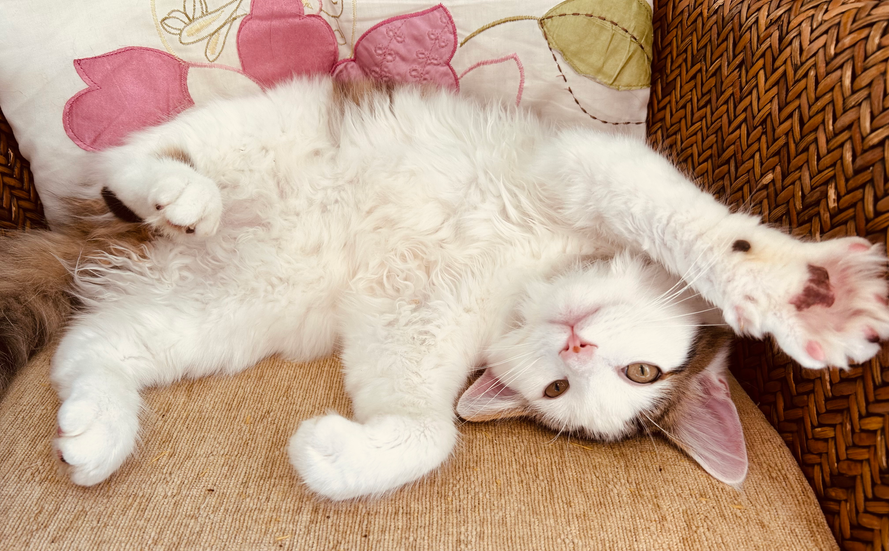







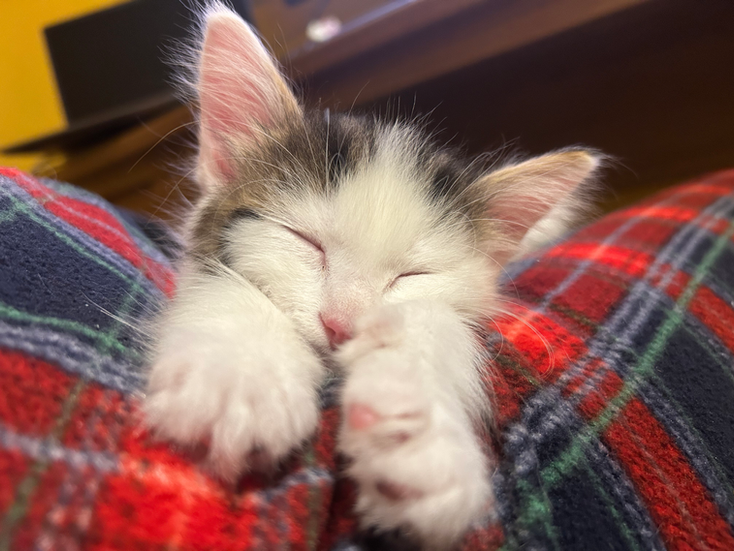



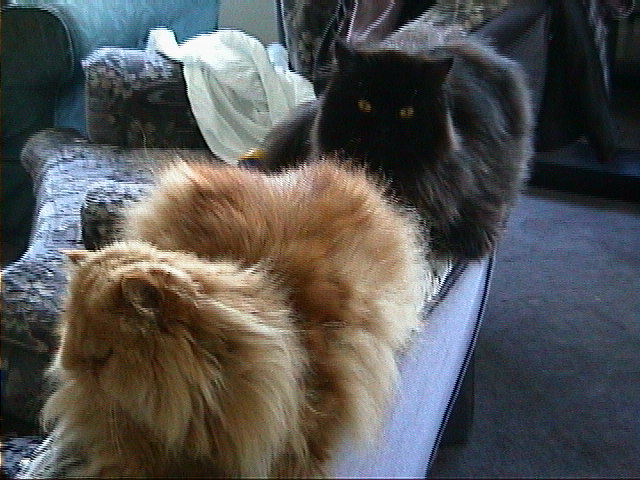











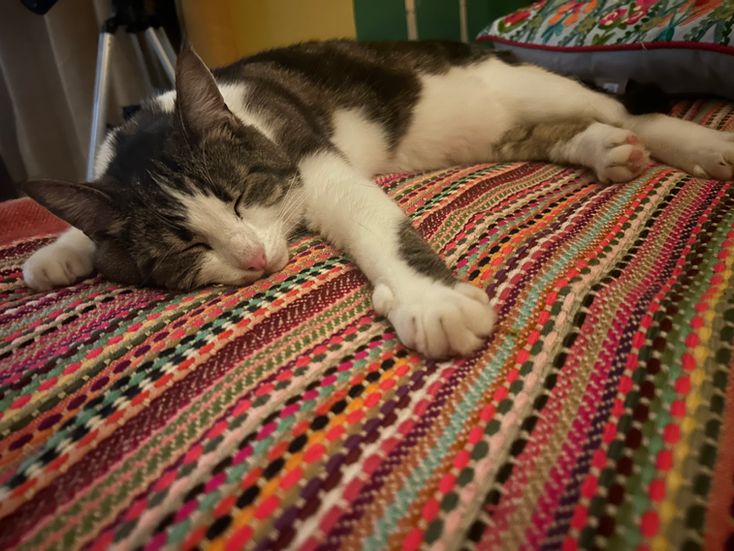

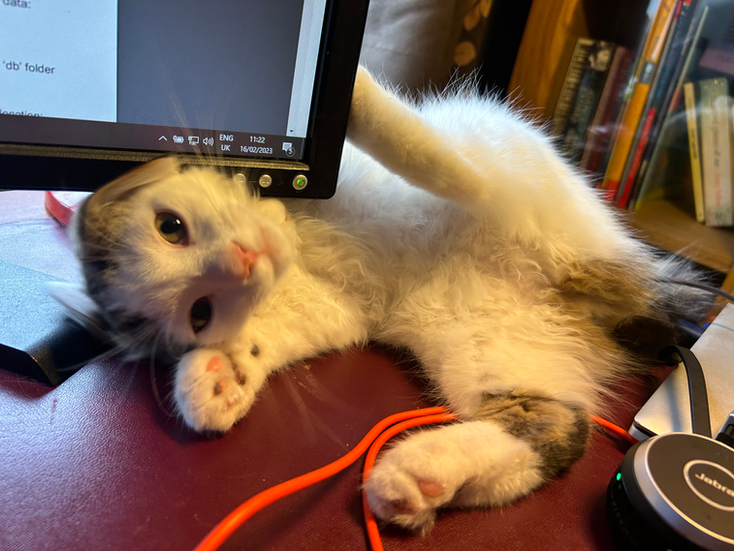



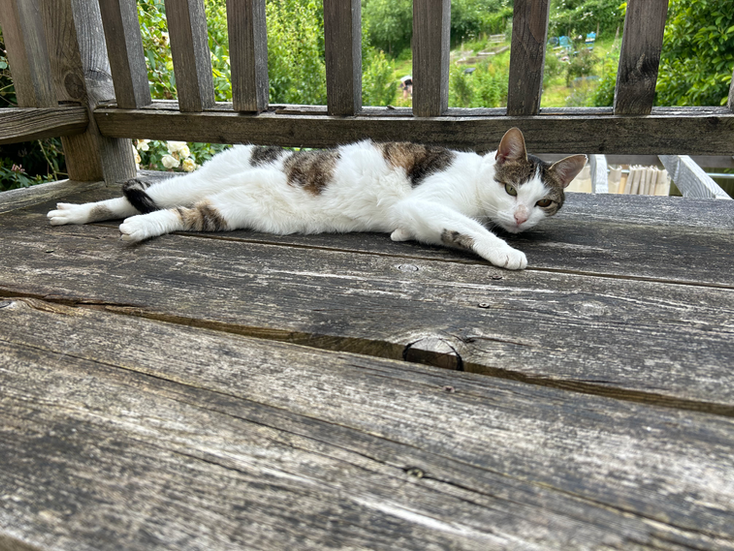










Comments